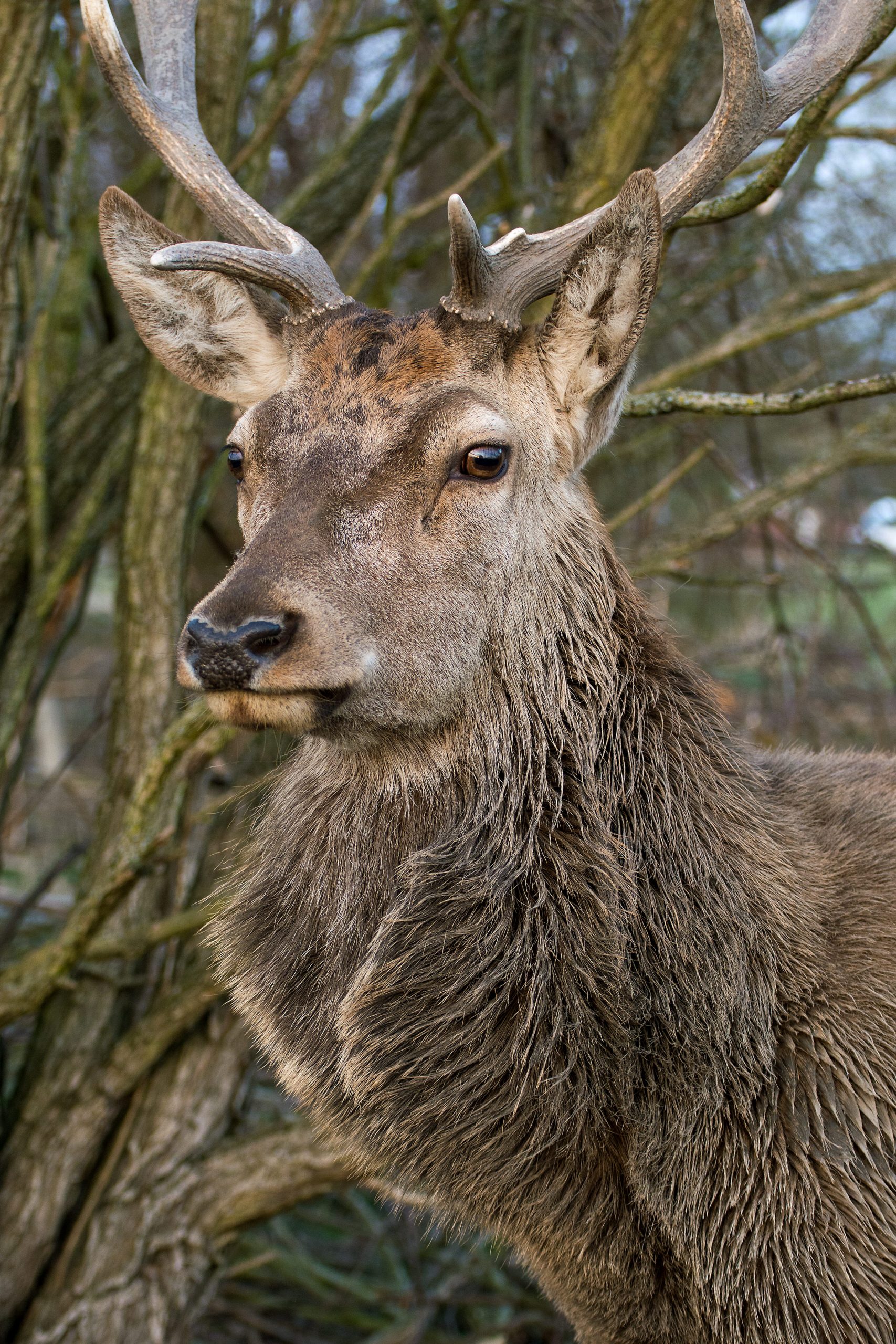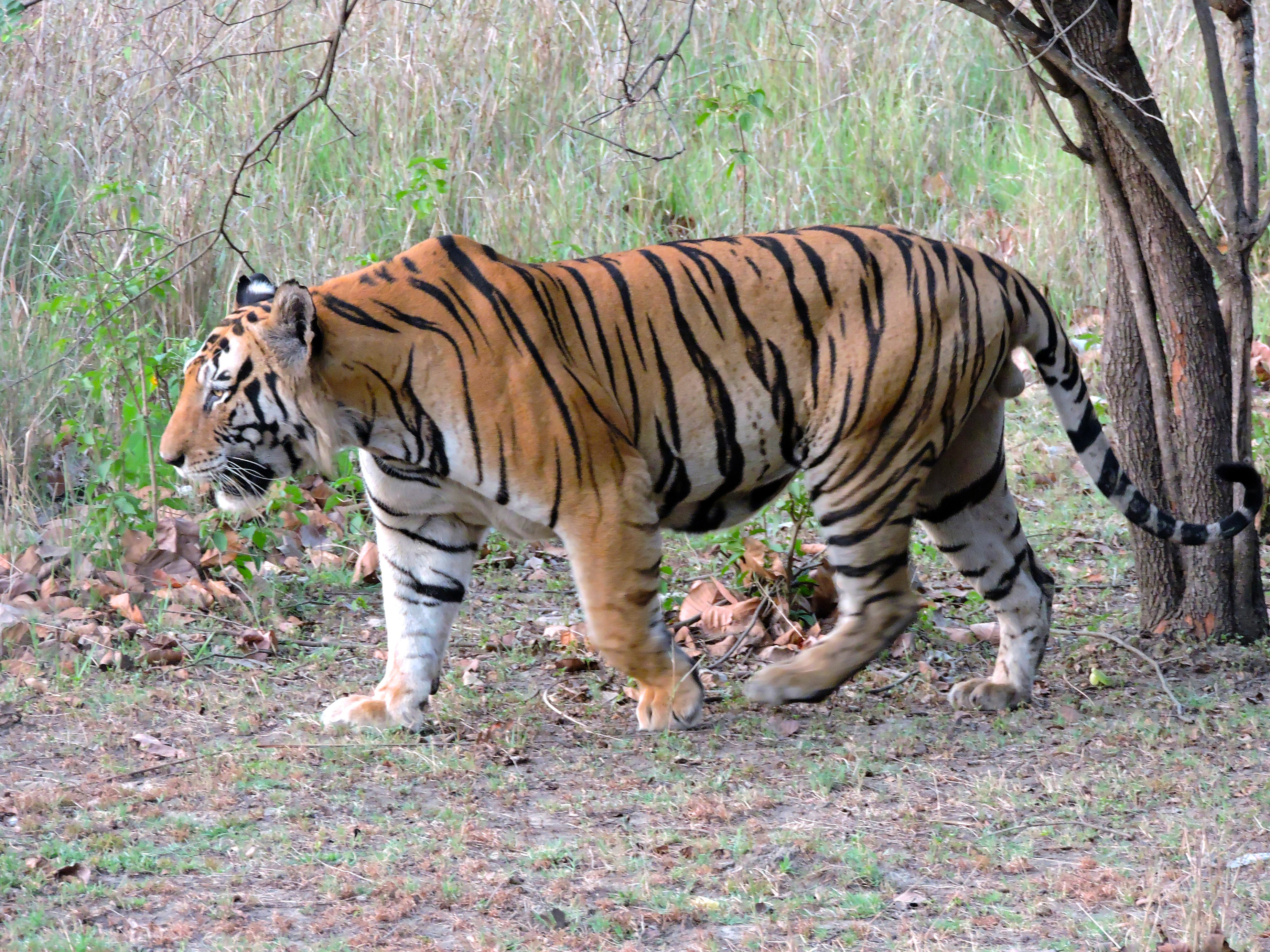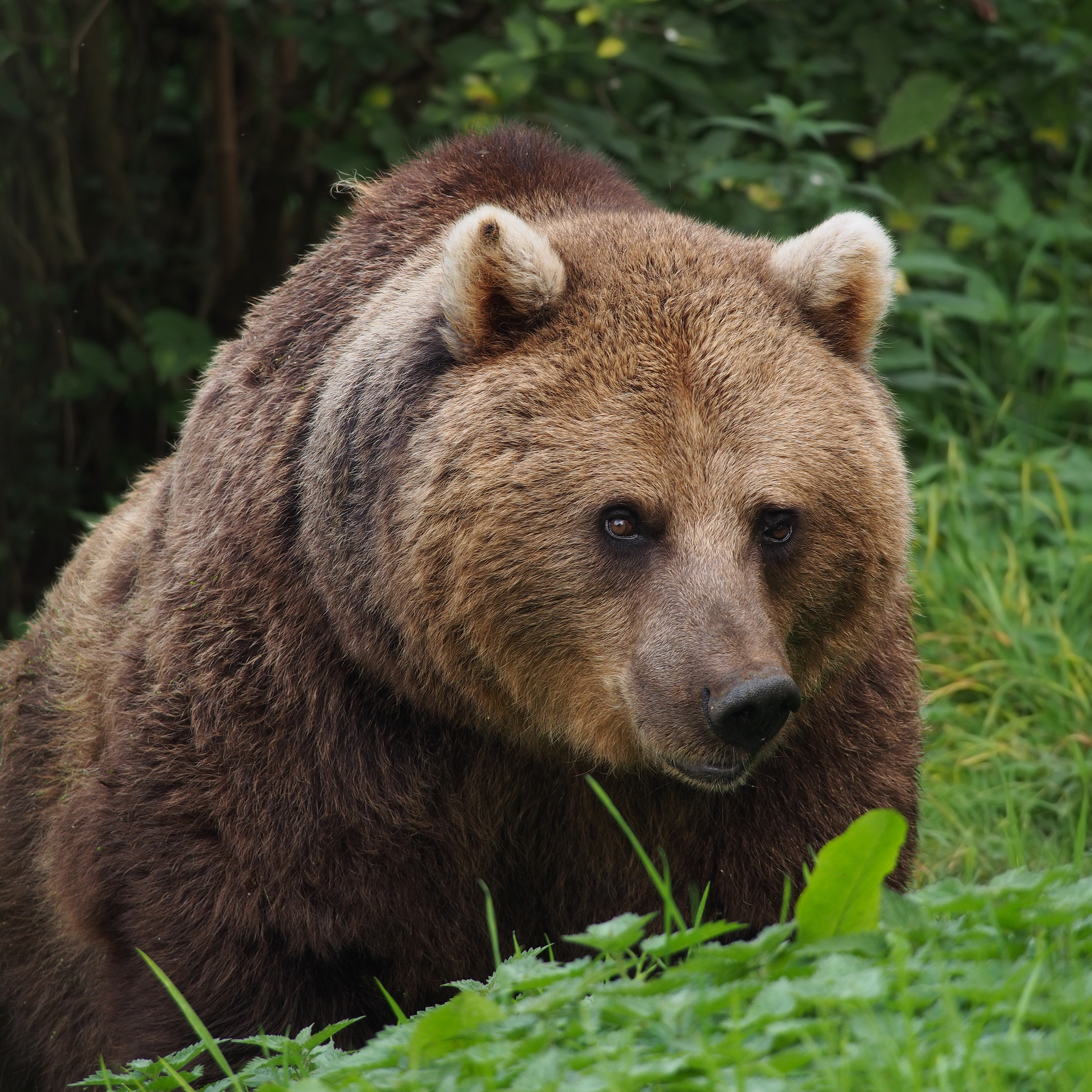|
Acinonyx Pleistocaenicus
''Acinonyx pleistocaenicus'' is an extinct felid species belonging to the genus ''Acinonyx'', native to Eurasia from the Early Pleistocene to Middle Pleistocene, from 1.3 to 0.6 million years ago. This species was larger than ''Acinonyx pardinensis''. Taxonomy Classification Originally described as ''Cynailurus pleistocaenicus'', several studies have since considered ''Acinonyx pleistocaenicus'' as a subspecies of ''Acinonyx pardinensis''. However, Jiangzuo et al. (2024) suggested that its cranial and dental anatomy have more distinguishing features and resemble more of modern cheetahs based on new specimens, classifying ''A. pleistocaenicus'' and ''A. pardinensis'' as separate species. Evolution ''Acinonyx pleistocaenicus'' may have evolved from ''A. pardinensis'' in Eurasia during the Early Pleistocene. During the Middle Pleistocene, ''A. pleistocaenicus'' was replaced by ''Acinonyx intermedius''. In spite of its similarity to ''A. intermedius'' and modern cheetah, ''A. ... [...More Info...] [...Related Items...] OR: [Wikipedia] [Google] [Baidu] |
Early Pleistocene
The Early Pleistocene is an unofficial epoch (geology), sub-epoch in the international geologic timescale in chronostratigraphy, representing the earliest division of the Pleistocene Epoch within the ongoing Quaternary Period. It is currently estimated to span the time between 2.580 ± 0.005 annum, Ma (million years ago) and 0.773 ± 0.005 Ma. The term Early Pleistocene applies to both the Gelasian, Gelasian Age and the Calabrian (stage), Calabrian Age. While the Gelasian and the Calabrian have officially been defined by the International Union of Geological Sciences (IUGS) to effectively constitute the Early Pleistocene, the succeeding Chibanian and Tarantian ages have yet to be ratified. These proposed ages are unofficially termed the Middle Pleistocene and Late Pleistocene respectively. The Chibanian provisionally spans time from 773 ka to 126 ka, and the Tarantian from then until the definitive end of the whole Pleistocene, c. 9700 BC in the 10th millennium BC. Notes {{Ge ... [...More Info...] [...Related Items...] OR: [Wikipedia] [Google] [Baidu] |
Xenocyon Lycaonoides
''Xenocyon'' ("strange dog") is an extinct group of canids, either considered a distinct genus or a subgenus of ''Canis''. The group includes ''Canis'' (''Xenocyon'') ''africanus'', ''Canis'' (''Xenocyon'') ''antonii'' and ''Canis'' (''Xenocyon'') ''falconeri'' that gave rise to ''Canis'' (''Xenocyon'') ''lycanoides''. The hypercarnivorous ''Xenocyon'' is thought to be closely related and possibly ancestral to modern dhole and the African wild dog, as well as the insular Sardinian dhole. Taxonomy ''Xenocyon'' is proposed as a subgenus of ''Canis'' named ''Canis'' (''Xenocyon''). One taxonomic authority proposes that as part of this subgenus, the group named ''Canis'' (''Xenocyon'') ex gr. ''falconeri'' (ex gr. meaning "of the group including") would include all of the large hypercarnivorous canids that inhabited the Old World during the Late Pliocene–Early Pleistocene: ''Canis'' (''Xenocyon'') ''africanus'' in Africa, ''Canis'' (''Xenocyon'') ''antonii'' in Asia and ''Canis'' ... [...More Info...] [...Related Items...] OR: [Wikipedia] [Google] [Baidu] |
Equus (genus)
''Equus'' () is a genus of mammals in the perissodactyl family (biology), family Equidae, which includes wild horse, horses, Asinus, asses, and zebras. Within the Equidae, ''Equus'' is the only recognized Extant taxon, extant genus, comprising seven living species. Like Equidae more broadly, ''Equus'' has numerous extinct species known only from fossils. The genus originated in North America and dispersed into the Old World and South America during the Early and Middle Pleistocene. Equinae, Equines are odd-toed ungulates with slender legs, long heads, relatively long necks, manes (erect in most subspecies), and long tails. All species are herbivorous, and mostly grazers, with simpler digestive systems than Ruminantia, ruminants but able to subsist on lower-quality vegetation. While the domestic horse and donkey (along with their feral horse, feral descendants) exist worldwide, wild equine populations are limited to Africa and Asia. Wild equine social systems are in two forms; a H ... [...More Info...] [...Related Items...] OR: [Wikipedia] [Google] [Baidu] |
Sinomegaceros
''Sinomegaceros'' is an extinct genus of deer known from the Late Pliocene/Early Pleistocene to Late Pleistocene of Central and East Asia. It is considered to be part of the group of "giant deer" (often referred to collectively as members of the tribe Megacerini), with a close relationship to ''Megaloceros''. Many members of the genus are noted for their distinctive palmate antler brow tines. Taxonomy The first species of the genus ''S. ordosianus'' and ''S. pachyosteus'' were named by pioneering Chinese paleontologist Yang Zhongjian, C. C. Young as species of ''Cervus'' in 1932 for material from Zhoukoudian. In a review of the paper the subsequent year Dietrich created the name ''Sinomegaceros'' as a subgenus of ''Cervus'' to house the species, with ''S. pachyosteus'' as the type species. Due to the fact that the name was not published in a formal research paper, it was not widely used for several decades after publication. The species ''S. yabei'' was named in 1938. In the fo ... [...More Info...] [...Related Items...] OR: [Wikipedia] [Google] [Baidu] |
Cervus
''Cervus'' is a genus of deer that primarily are native to Eurasia, although one species occurs in northern Africa and another in North America. In addition to the species presently placed in this genus, it has included a whole range of other species now commonly placed in other genera. Additionally, the species-level taxonomy is in a state of flux. Taxonomy Genus Until the 1970s, ''Cervus'' also included the members of the genera '' Axis'', '' Dama'', and '' Elaphurus'', and until the late 1980s, it included members of '' Rucervus'' and '' Rusa''. Species In the third edition of ''Mammal Species of the World'' from 2005, only the red deer (''C. elaphus'') and sika deer (''C. nippon'') were recognized as species in the genus ''Cervus''. Genetic and morphological evidence suggest more species should be recognized. For example, the species '' Cervus canadensis'' (elk/wapiti) is considered a separate species. Red deer species group Within the red deer species group, some sour ... [...More Info...] [...Related Items...] OR: [Wikipedia] [Google] [Baidu] |
Tiger
The tiger (''Panthera tigris'') is a large Felidae, cat and a member of the genus ''Panthera'' native to Asia. It has a powerful, muscular body with a large head and paws, a long tail and orange fur with black, mostly vertical stripes. It is traditionally classified into nine Holocene, recent subspecies, though some recognise only two subspecies, mainland Asian tigers and the island tigers of the Sunda Islands. Throughout the tiger's range, it inhabits mainly forests, from coniferous and temperate broadleaf and mixed forests in the Russian Far East and Northeast China to tropical and subtropical moist broadleaf forests on the Indian subcontinent and Southeast Asia. The tiger is an apex predator and preys mainly on ungulates, which it takes by ambush. It lives a mostly solitary life and occupies home ranges, defending these from individuals of the same sex. The range of a male tiger overlaps with that of multiple females with whom he mates. Females give birth to usually two or ... [...More Info...] [...Related Items...] OR: [Wikipedia] [Google] [Baidu] |
Homotherium Latidens
''Homotherium'' is an extinct genus of Homotherini, scimitar-toothed cat belonging to the extinct subfamily Machairodontinae that inhabited North America, Eurasia, and Africa, as well as possibly South America during the Pliocene and Pleistocene epochs from around 4 million to 12,000 years ago. It was one of the last surviving members of the subfamily alongside the more famous sabertooth ''Smilodon'', to which it was not particularly closely related. It was a large cat, comparable in size to a lion, functioning as an apex predator in the ecosystems it inhabited. It had an elongate neck and relatively elongate legs, a relatively short back and a very short tail, with the mummy of a ''H. latidens'' cub of Late Pleistocene age found in Siberia having a plain dark brown coat colour. In comparison to ''Smilodon'', the canines of ''Homotherium'' were shorter, though still longer than those of living cats, and it is suggested to have had a different ecology from ''Smilodon'' as a pursuit ... [...More Info...] [...Related Items...] OR: [Wikipedia] [Google] [Baidu] |
Ursus Arctos
The brown bear (''Ursus arctos'') is a large bear native to Eurasia and North America. Of the land carnivorans, it is rivaled in size only by its closest relative, the polar bear, which is much less variable in size and slightly bigger on average. The brown bear is a sexually dimorphic species, as adult males are larger and more compactly built than females. The fur ranges in color from cream to reddish to dark brown. It has evolved large hump muscles, unique among bears, and paws up to wide and long, to effectively dig through dirt. Its teeth are similar to those of other bears and reflect its dietary plasticity. Throughout the brown bear's range, it inhabits mainly forested habitats in elevations of up to . It is omnivorous, and consumes a variety of plant and animal species. Contrary to popular belief, the brown bear derives 90% of its diet from plants. When hunting, it will target animals as small as insects and rodents to those as large as moose or muskoxen. In part ... [...More Info...] [...Related Items...] OR: [Wikipedia] [Google] [Baidu] |
Panthera Gombaszoegensis Jinpuensis
''Panthera gombaszoegensis'', also known as the European jaguar, is a ''Panthera'' species that lived from about 2.0 to 0.3 million years ago in Europe, as well as likely elsewhere in Eurasia. The first fossils were excavated in 1938 in Gombasek Cave, Slovakia. ''P. gombaszoegensis'' was a medium-large sized species that formed an important part of the European carnivore guild for a period of over a million years. Many authors have posited that it is the ancestor of the American jaguar (''Panthera onca''), with some authors considering it the subspecies ''Panthera onca gombaszoegensis,'' though the close relationship between the two species has been questioned by some authors. Taxonomy ''Leo gombaszoegensis'' was the scientific name proposed by Miklós Kretzoi in 1938 for teeth found in deposits in Gombasek Cave, Slovakia. The spelling of the species name is based on the Hungarian name of Gombasek, . It was reassessed and subordinated to the genus ''Panthera'' in 1971. The follow ... [...More Info...] [...Related Items...] OR: [Wikipedia] [Google] [Baidu] |
Megantereon
''Megantereon'' is an extinct genus of prehistoric machairodontine saber-toothed cat that lived in Eurasia, Africa and possibly North America from the late Pliocene to the Middle Pleistocene. It is a member of the tribe Smilodontini, and closely related to and possibly the ancestor of the famous American sabertooth ''Smilodon''. In comparison to ''Smilodon'' it was somewhat smaller, around the size of a jaguar, though it is thought to have had a similar hunting strategy as an ambush predator. Taxonomy and evolution The type species of ''Meganteron'', ''M. cultridens'' was described by Georges Cuvier in 1824, as '' Ursus cultridens'', based on two teeth collected from Pliocene sediments in the Valdarno region of Tuscany, Italy, erroneously considering them to belong to a bear. In addition to the two teeth of ''Megantereon'', Cuvier included another, much older tooth from the late Miocene of Eppelsheim in Germany in the species, which is now known to belong to the unrelated sab ... [...More Info...] [...Related Items...] OR: [Wikipedia] [Google] [Baidu] |
Pachycrocuta Brevirostris
''Pachycrocuta'' is an extinct genus of hyena. The largest and most well-researched species is ''Pachycrocuta brevirostris'', colloquially known as the giant short-faced hyena as it stood about at the shoulder and it is estimated to have averaged in weight, approaching the size of a lioness, making it one the largest known hyenas. It is often hypothesised to have been a specialised kleptoparasitic scavenger, using its imposing size to force other predators off of carcasses, though some authors have suggested they may have been effective pack hunters like living spotted hyenas. The precise time of the origin of the genus depends on what species are included, though the only unquestioned species of the genus, ''P. brevirostris'', had emerged by the Early Pleistocene (around 2.6-2 million years ago). Around 800,000 years ago at the end of the Early Pleistocene, it became locally extinct in Europe, with it surviving in East Asia until at least 500,000 years ago, and possibly later ... [...More Info...] [...Related Items...] OR: [Wikipedia] [Google] [Baidu] |
Ursus (mammal)
''Ursus'' is a genus in the family Ursidae (bears) that includes the widely distributed brown bear, the polar bear, the American black bear, and the Asian black bear. The name is derived from the Latin ''ursus'', meaning ''bear''. Taxonomy and systematics Extant species A hybrid between grizzly bears and polar bears has also been recorded. Known commonly as a pizzly, prizzly, or grolar bear, the official name is simply " grizzly–polar bear hybrid". Fossils * †'' Ursus deningeri'' Richenau, 1904 * †'' Ursus dolinensis'' (Garcia & Arsuaga, 2001) * †'' Ursus etruscus'' Cuvier, 1823 * †'' Ursus ingressus'' Rabeder, Hofreiter, Nagel & Withalm 2004 * †'' Ursus kudarensis'' Baryshnikov, 1985 * †'' Ursus minimus'' (Devèze & Bouillet, 1827) * †'' Ursus pyrenaicus'' (Depéret, 1892) * †'' Ursus rossicus'' Borissiak, 1930 * †'' Ursus savini'' (Andrews, 1922) * †'' Ursus sackdillingensis'' Heller, 1955 * †'' Ursus spelaeus'' Rosenmüller, 1794 * †' ... [...More Info...] [...Related Items...] OR: [Wikipedia] [Google] [Baidu] |




